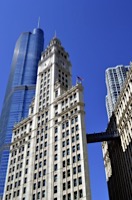
Malcolm Gladwell’s article on innovation in The New Yorker entitled Creation Myth is a brilliantly written piece that, in the process of dispelling some innovation myths about Xerox PARC, creates some new myths, such as the one that the Apple of 1980s was the epitome of agile innovation (see Part 1 of this article.)
Gladwell’s article sheds no light on how Apple in the last ten years (and other firms) have learned how to combine continuous innovation with disciplined execution in sector after sector. To understand that, we need a bit of management history. In the 20th Century, innovation was peripheral
In the 20th Century organizations tended to go through three phases:(i)
* In the first phase, there were startups run by commandos. They were swashbuckling innovators who were unpredictable and uncontrollable yet remarkably productive. However most startups failed.










 What if your pajamas could tell you how well you slept? That's the dream of startup Nyx Devices, which has developed a nightshirt embedded with fabric electronics to monitor the wearer's breathing patterns. A small chip worn in a pocket of the shirt processes that data to determine the phase of sleep, such as REM sleep (when we dream), light sleep, or deep sleep.
What if your pajamas could tell you how well you slept? That's the dream of startup Nyx Devices, which has developed a nightshirt embedded with fabric electronics to monitor the wearer's breathing patterns. A small chip worn in a pocket of the shirt processes that data to determine the phase of sleep, such as REM sleep (when we dream), light sleep, or deep sleep. Bridge Investment Fund recently scored its biggest win — in the eyes of job-creation-conscious local investors, at least — when Israel-based portfolio company IceCure decided to establish its U.S. headquarters in Cleveland.
Bridge Investment Fund recently scored its biggest win — in the eyes of job-creation-conscious local investors, at least — when Israel-based portfolio company IceCure decided to establish its U.S. headquarters in Cleveland. ABU DHABI // The emirate will almost double its annual green-energy prize to $4 million, organisers have announced.
ABU DHABI // The emirate will almost double its annual green-energy prize to $4 million, organisers have announced. Oakland County's Automation Alley will team up with former Chrysler CEO Tom LaSorda to help entrepreneurs realize their big ideas.
Oakland County's Automation Alley will team up with former Chrysler CEO Tom LaSorda to help entrepreneurs realize their big ideas. Science and engineering research space at the nation's top research universities grew by 4 percent in 2008 and 2009, compared with the previous two-year period, reflecting a rebound in the expansion rate after a slowing trend that reached a low point in 2006 and 2007, according to a new report from the National Science Foundation.
Science and engineering research space at the nation's top research universities grew by 4 percent in 2008 and 2009, compared with the previous two-year period, reflecting a rebound in the expansion rate after a slowing trend that reached a low point in 2006 and 2007, according to a new report from the National Science Foundation. Next time you want to give your kid a Rolo, think twice. You could be either teaching your kid to become a criminal or a CEO.
Next time you want to give your kid a Rolo, think twice. You could be either teaching your kid to become a criminal or a CEO. Economic analysis reported by the Small Business Administration shows that small companies “create more than half of the nonfarm private gross domestic product (GDP)” and “employ just over half of all private sector employees.” That level of economic impact makes encouraging small business economically important to government officials.
Economic analysis reported by the Small Business Administration shows that small companies “create more than half of the nonfarm private gross domestic product (GDP)” and “employ just over half of all private sector employees.” That level of economic impact makes encouraging small business economically important to government officials. French President Nicolas Sarkozy opened up the eG8 Forum in Paris with a keynote speech and interview with Publicis Groupe CEO Maurice Levy and journalists.
French President Nicolas Sarkozy opened up the eG8 Forum in Paris with a keynote speech and interview with Publicis Groupe CEO Maurice Levy and journalists.  ccording to the latest BizExchange Index, the volume of businesses for sale has increased in the first quarter of 2011, potentially driven by an aging population. However, younger generations are not in a position to buy.
ccording to the latest BizExchange Index, the volume of businesses for sale has increased in the first quarter of 2011, potentially driven by an aging population. However, younger generations are not in a position to buy.